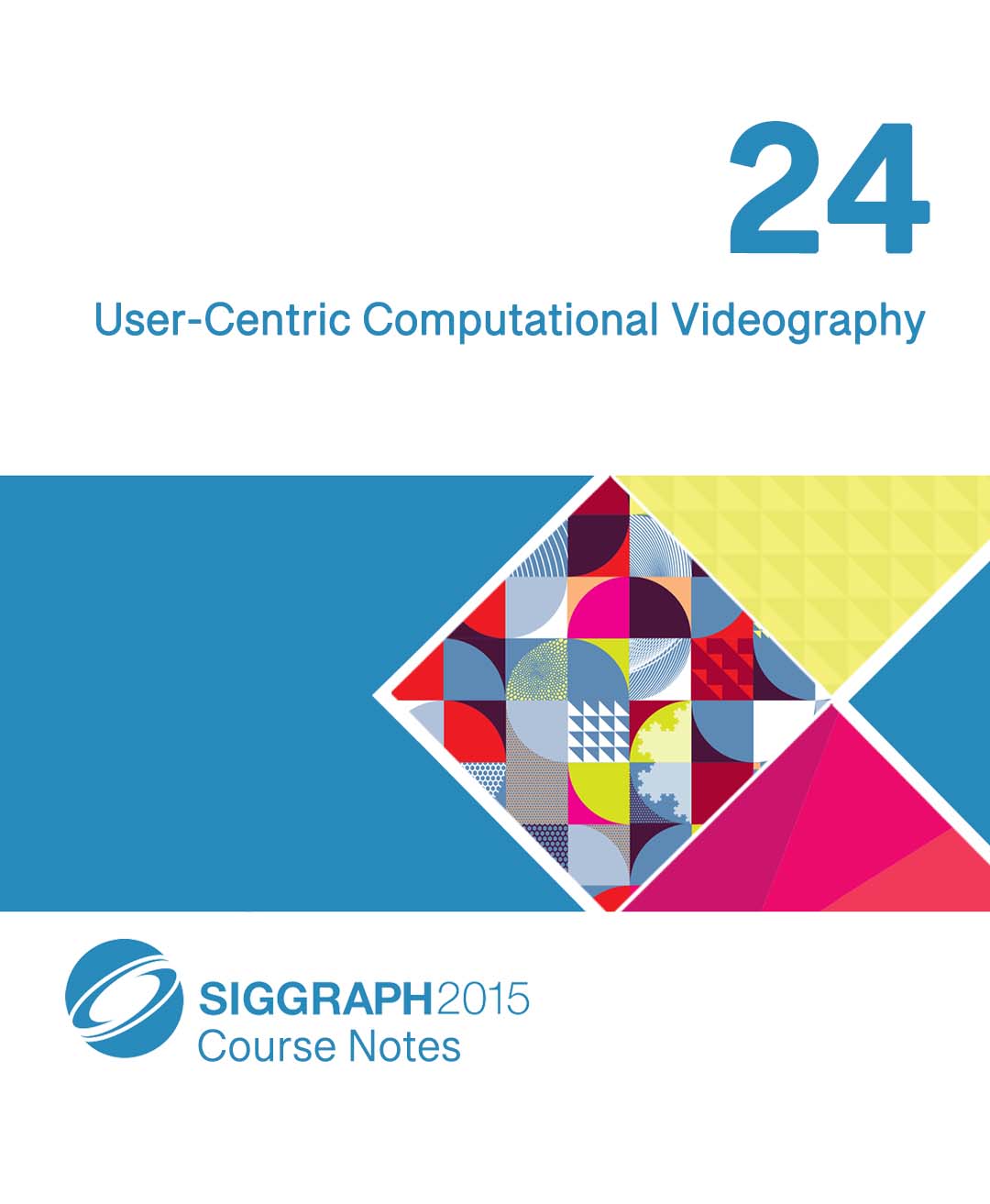“User-Centric Computational Videography” by Richardt, Tompkin, Bai and Theobalt
Conference:
Type(s):
Entry Number: 24
Title:
- User-Centric Computational Videography
Course Organizer(s):
Presenter(s)/Author(s):
Abstract:
Prerequisites
Basic knowledge of image and video processing, computer graphics, and vision.
Who Should Attend
Enthusiastic video users, video editors, and researchers.
Description
Digital video is ubiquitous: virtually every mobile device comes with at least one high-resolution video camera, and users often upload video to community web sites. One hundred hours of video are uploaded to YouTube alone every minute. Yet, many commercial solutions for capturing, editing, and browsing videos are difficult to use, so they constrict user creativity.
Video capturing requires framing techniques and shot planning to effectively convey the intended message and be comfortable to watch. Handheld capture with mobile devices in particular often results in shaky and wobbly footage. In addition, traditional video-editing tools are not evolving to support the proliferation of video content, and some provide little more than an image-editing interface with a timeline. Unfortunately, this rather trivial addition of the temporal axis to images does not enable users to perform complex editing tasks that change the content of videos, like adding or removing objects in a video. And existing community video collections typically treat videos like photos. They require users to navigate static thumbnails, instead of visualizing spatial or temporal overlaps between videos.
This course aims to improve the quality and flexibility of capturing, editing, and exploring consumer videos. Topics include recent techniques in computer vision and graphics, and their recent evolution. By finding and exploiting inter- and intra-video content connections, these techniques make videos easier for amateur users (for example, by enabling dynamic object removal in videos) and provide new empowering video experiences like content-based video browsing. The course summarizes current trends in the software industry and in research, and proposes directions for future research.




